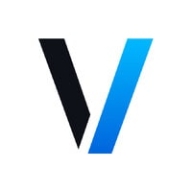

Veracode and Fortify Application Defender are leading solutions in application security. Veracode stands out for its cost-effectiveness and ease of deployment, while Fortify is favored for its superior performance capabilities and comprehensive feature set.
Features: Veracode offers strong integration capabilities, automated scanning features, and ease of use with its automation capabilities. Fortify Application Defender is known for its detailed analysis tools, extensive vulnerability coverage, and an advanced feature set.
Room for Improvement: Veracode could enhance its detailed reporting and expand language support, while Fortify could work on a more intuitive API, improved real-time reporting, and require a shorter initial setup time.
Ease of Deployment and Customer Service: Veracode is praised for easy deployment and responsive customer service. Fortify provides comprehensive onboarding support, although it requires more time for initial setup.
Pricing and ROI: Veracode is noted for being budget-friendly with quick ROI. Fortify offers substantial long-term benefits, with a higher upfront cost considered worthwhile by users.


Micro Focus Security Fortify Application Defender is a runtime application self-protection (RASP) solution that helps you manage and mitigate risk from homegrown or third-party applications. It provides centralized visibility into application use and abuse while protecting from software vulnerability exploits and other violations in real time.
Veracode is a leading provider of application security solutions, offering tools to identify, mitigate, and prevent vulnerabilities across the software development lifecycle. Its cloud-based platform integrates security into DevOps workflows, helping organizations ensure that their code remains secure and compliant with industry standards.
Veracode supports multiple application security testing types, including static analysis (SAST), dynamic analysis (DAST), software composition analysis (SCA), and manual penetration testing. These tools are designed to help developers detect vulnerabilities early in development while maintaining speed in deployment. Veracode also emphasizes scalability, offering features for enterprises that manage a large number of applications across different teams. Its robust reporting and analytics capabilities allow organizations to continuously monitor their security posture and track progress toward remediation.
What are the key features of Veracode?
What benefits should users consider in Veracode reviews?
Veracode is widely adopted in industries like finance, healthcare, and government, where compliance and security are critical. It helps these organizations maintain strict security standards while enabling rapid development through its integration with Agile and DevOps methodologies.
Veracode helps businesses secure their applications efficiently, ensuring they can deliver safe and compliant software at scale.
We monitor all Application Security Tools reviews to prevent fraudulent reviews and keep review quality high. We do not post reviews by company employees or direct competitors. We validate each review for authenticity via cross-reference with LinkedIn, and personal follow-up with the reviewer when necessary.